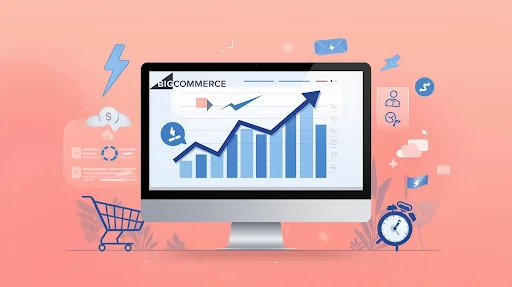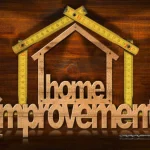Slow-loading BigCommerce stores lose visitors, conversions, and revenue. Even small delays affect bounce rates and cart abandonment. By optimizing images, using a CDN, reducing unnecessary scripts, and fine-tuning your store, you can improve load times, boost customer satisfaction, and increase sales. Advanced strategies like lazy loading, next-gen image formats, and code minification take performance to the next level.
Online shoppers today expect websites to load within 1-2 seconds. If your BigCommerce store is too slow, most visitors will not even bother to view what you are offering. That translates to fewer clicks, fewer carts, and fewer sales.
Studies indicate that the conversion rates will be significantly affected by the slightest delay in load times. A one-second delay may not seem like a lot, but it can mean the difference between someone completing a purchase or leaving for a competitor. Faster websites don’t just enhance the customer experience, but also assist in search engine visibility and long-term customer loyalty.
The positive side is that it is possible and feasible to speed up your BigCommerce store. By using the appropriate strategies, there is a chance to reduce load times, keep shoppers active, and increase overall revenue.
Why Speed Matters More Than Ever
Slow websites not only make people feel frustrated, but they also directly cut into your bottom line. Studies show that when a page takes more than 3 seconds to open, it tends to lose almost half of its visitors. On mobile devices, the tolerance is even lower.
BigCommerce provides you with great tools to build an online store, but on its own, the platform cannot ensure performance. BigCommerce speed optimization is all about tuning everything between server response to image delivery in order to give shoppers a ride through the homepage to the checkout point.
Fast load times also mean search engines favor you. Google has agreed that page speed is a ranking factor, meaning that the faster your page is, the higher the chances that you will be shown when someone types what you are offering in the search box. Better rankings, more clicks, more sales.
Faster Load Times = More Revenue
Every second counts. Delays impact your store in multiple ways:
- Bounce rate impact: If a visitor exits after the first click because your store lags, you lose potential sales.
- Cart abandonment: Although one makes it to the checkout, a slow payment page may be the last tipping point.
- Customer loyalty: Shoppers remember their experience. Smooth, fast sites build trust, while slow sites drive customers away.
Think of speed like customer service. You walk into a store and then wait five minutes before somebody greets you, you’d probably leave. Online, that delay is just a spinning wheel.
Quick Wins to Boost Speed
Not all of the improvements require such an extensive change. A few practical tweaks can make a noticeable difference right away:
- Compress and resize images – Good-quality images are significant, though huge files drag everything down.
- Use Content Delivery Network (CDN) – CDNs spread your content to servers worldwide, therefore, the customers load the content closest to them.
- Reduce unnecessary scripts – Unnecessary apps, trackers, and plugins tend to create space junk. Keep only what you really use.
- Enable browser caching – Returning visitors are expected to load quicker, as their devices can “remember” your store.
- Upgrade hosting if needed – Sometimes the bottleneck is your server itself. Make sure your plan matches your traffic levels.
Each small improvement may save only fractions of a second, but combined, they make your store feel fast and responsive.
How BigCommerce Itself Helps
The benefits of BigCommerce include the fact that many of the performance headaches are already handled by the platform. For example:
- Built-in CDN: Every store benefits from global distribution right out of the box.
- Automatic scaling: Your server resources are automatically adjusted by BigCommerce in case of a spike in traffic over the holidays.
- Optimized checkout: The streamlined checkout process helps reduce friction, and this means fewer abandoned carts.
With that said, relying only on default features is like purchasing a high-performance vehicle and not tuning it. You’ll get decent results, but fine-tuning is what makes it fly.
The Revenue Connection
Why does all this count towards revenue growth? Since speed usually means the difference between a window shopper and a paying customer. Amazon once reported that every 100-millisecond delay cost them 1% in sales. Your store may not be like Amazon-scale, but the same principle works.
When you grow website speed, you’re essentially removing barriers. Customers don’t have to think about the site they just shop. And when products are the point of focus instead of waiting for a page to load, sales go up.
Pro Tips for Going Further
When you are willing to go even further, here are a few more advanced ways to maximize performance:
- Lazy loading: Delay loading images until they’re actually visible on the screen.
- Next-gen image formats: WebP or AVIF instead of the traditional JPEGs are used to deliver faster with the same quality.
- Minify CSS and JavaScript: Remove extra spaces, comments, and unused code to shrink file sizes.
- Third-party app audit: There are some apps that are running silently. Inspect heavy ones and replace them with lighter alternatives.
- Server-side rendering: Helps deliver content faster, especially for dynamic pages.
ROI is well justified when you check bounce rates drop and conversions rise.
The Future of Speed in E-Commerce
As we proceed in the future, it is only going to be more about speed. With 5G, instant experiences are becoming the expectation, not the bonus. Mobile shoppers demand sites, in particular, to feel as fast as native apps.
BigCommerce is constantly adding to its performance features; yet, store owners paying attention to details will never fall behind. Use it as a sort of customer respect: you appreciate their time, and in return they appreciate your store.
FAQs
Q1: How fast should my BigCommerce store load?
Ideally, your store should load in under 3 seconds. Faster load times improve user experience, reduce bounce rates, and increase conversions especially on mobile devices.
Q2: Does improving site speed really increase sales?
Yes. Multiple studies show that faster websites have higher conversion rates and lower cart abandonment. A smooth shopping experience keeps customers engaged and encourages purchases.
Q3: Is a CDN necessary if BigCommerce already has one?
Yes. While BigCommerce includes a built-in CDN, using additional or optimized CDN configurations can deliver content faster in specific regions and improve performance for high-traffic or media-heavy stores.
Q4: How often should I run a website speed test?
It’s recommended to test your site at least once a month and after any major updates, such as adding new apps, redesigning pages, or uploading large media files.
Q5: Can I optimize my BigCommerce store myself, or do I need a developer?
You can start with simple improvements like image compression and caching. For advanced optimizations such as lazy loading, minifying code, or server-side rendering working with a developer is advisable to ensure proper implementation.
Q6: What are the most effective ways to improve BigCommerce load times?
Key strategies include: compressing images, enabling browser caching, reducing unnecessary scripts, using a CDN, upgrading hosting if needed, implementing lazy loading, and using next-gen image formats like WebP or AVIF.
Q7: How does site speed affect SEO?
Google considers page speed a ranking factor. Faster stores rank higher in search results, leading to more visibility, traffic, and potential sales. Optimizing load times is essential for both user experience and search engine performance.







